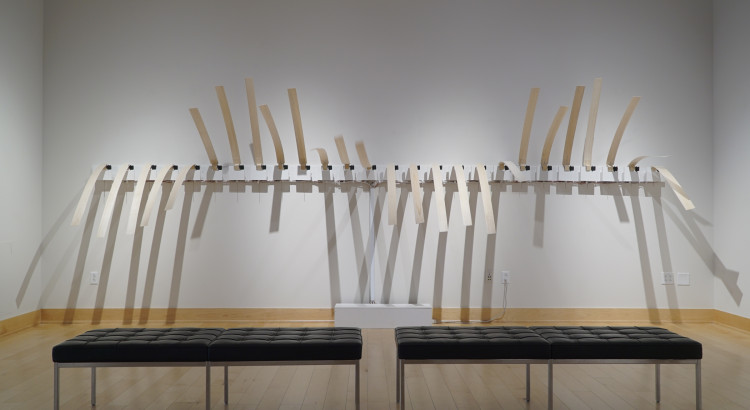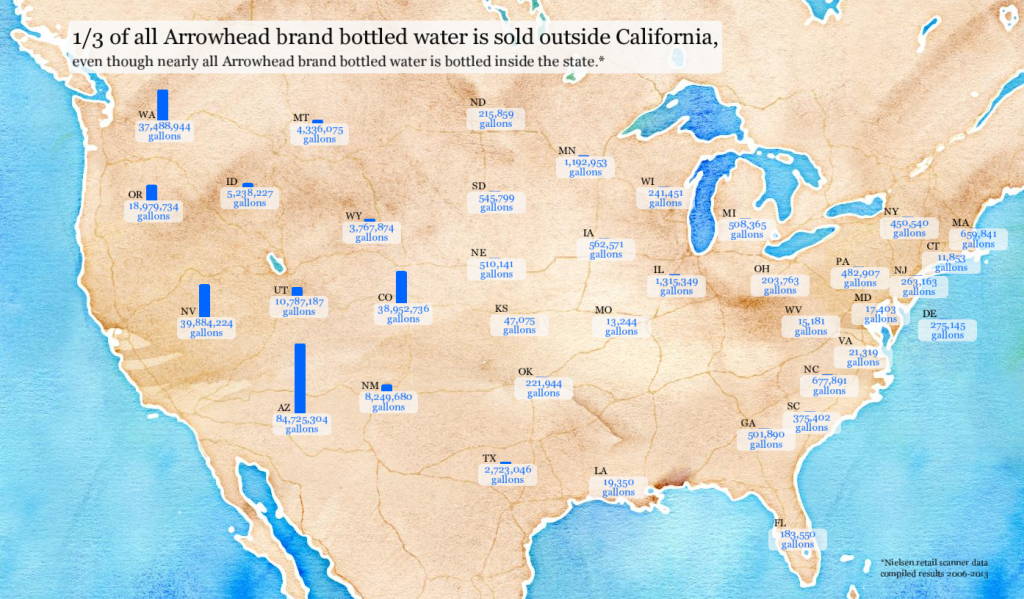Precipitation 3 is one of a series of musical compositions written for 26 clock chimes as part of the sound art installation, Aqua•litative. With my Precipitation series, I treat the electromechanical structure as musical instrument, navigating through sound with the syntactical construction of code. Compositions played by the sculpture evoke precipitation data of California weather stations by cycling through bits of its data. These cycles create emergent sonic patterns in a continuously evolving play between density and rhythm. Movement flows as collapsing waves, additively striking a cybernetic balance between natural order and mechanic motion.
Category: Process

Video documentation (Elmaleh Gallery)
Documentation footage of Aqua•litative at the Elmaleh Gallery in Charlottesville, VA.

Installation in Duke Gallery: Harrisonburg, VA
Aqua•litative exhibited in the Duke Gallery at James Madison University Sept. 5 – Oct. 15, 2016 as part of Harmonic Laboratory‘s Recurrent Exhibitions show. A gallery talk was held on Sept. 16th.

Installation in Elmaleh Gallery
Aqua•litative exhibited in the Elmaleh Gallery in Charlottesville, VA from April 15 – May 2, 2016. A gallery talk was held on Friday, April 29th.
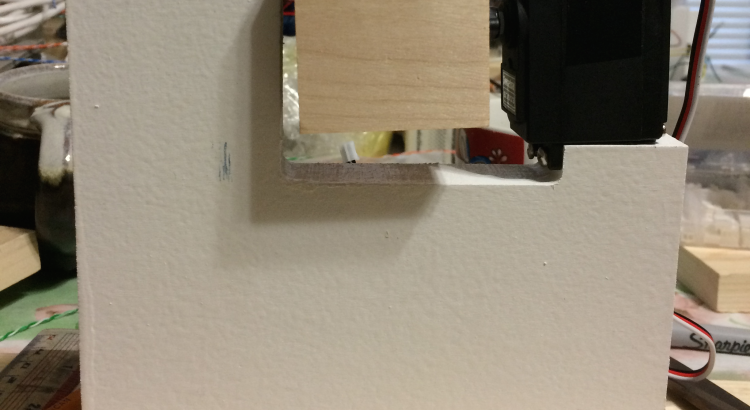
Arduino: 26 servo motor test
Physical test of 26 servo motors in the Aqua•litative installation. Motors are moving in sequence to a new random point. The final product will render multiple data sets related to California’s water history into a sensory experience of movement (servo motors) and sound (ringing chimes).
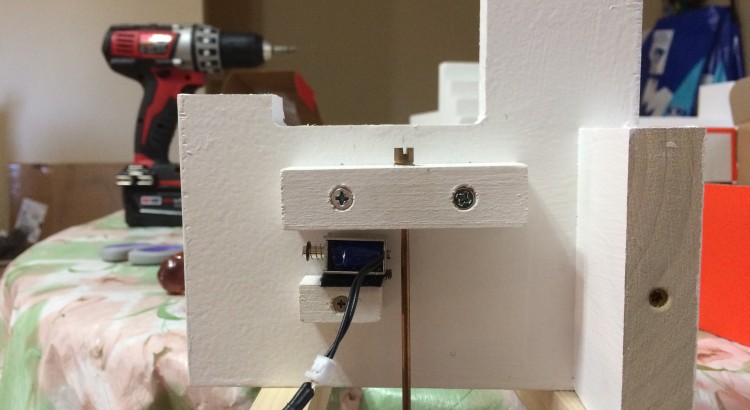
Arduino: 26 solenoid test
Physical test of 26 solenoids at 100ms delay. The final product will render multiple data sets related to California’s water history into a sensory experience of movement (servo motors) and sound (ringing chimes).
This video is of the 26 solenoids on the installation rig hitting/ringing clock chimes.
This video shows the four relay boards and wiring. The 26 solenoids are connected to the bread board.
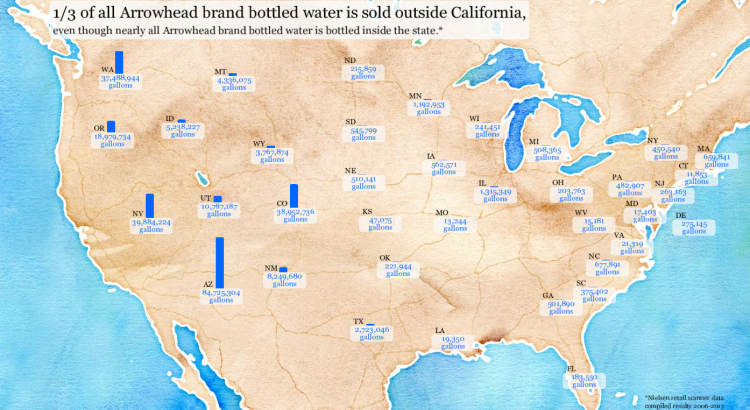
Visualization: U.S. Bottled Water Sales of California’s Water
Based upon grocery receipts using Nielsen scanner data (Kilts-Nielsen Data Center at the University of Chicago Booth School of Business), nearly 1/3 of all Arrowhead brand water is sold outside state boundaries of its aquifers. We developed a visualization of bottled water sales for the bottled water Arrowhead brand (Nestle). Nestle’s Arrowhead brand of bottled water has 11 of its 12 aquifers located in California (the 12th is in Colorado), and 2006-2013 sales of the bottled water expand out across the country (shown below).
Information on availability and access to the data is available at research.ChicagoBooth.edu/nielsen
Listed Locations of Nestle’s aquifers (http://www.nestle-watersna.com/asset-library/Documents/AR_ENG.pdf, which was last accessed April, 2015).
Southern Pacific Springs, Riverside County, CA;
Arrowhead Springs, San Bernardino County, CA;
Long Point Ranch Springs, Running Springs, CA;
Palomar Mountain Granite Springs (PMGS), Palomar, CA;
Deer Canyon Springs, San Bernardino County, CA;
Coyote Springs, Inyo County, CA;
White Meadow Spring, El Dorado County, CA;
Lukens Springs, Placer County, CA;
Sopiago Springs, El Dorado County, CA;
Sugar Pine Springs, Tuolumne County, CA;
Arcadia Springs, Napa County, CA;
Hope Springs, Hope BC Canada and/or Ruby Springs, Chaffee County, CO.
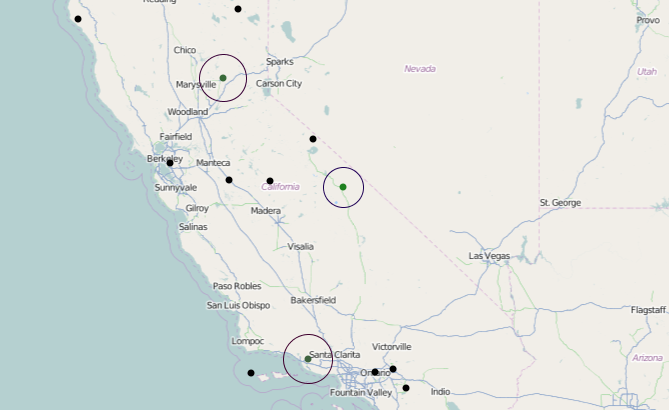
Processing: CA weather station data map
Preliminary test to push California weather station data onto a map using Processing. Taking sixteen Western Regional Climate Center (WRCC) stations from 1870-1900 and displaying their location and collected daily temperature information on the map as concentric circles (size and color). Thanks to WRCC for helping with collecting station information.
Reference: http://wrcc.dri.edu/csc/scenic/data/station_finder/

Lit Review: Cadillac Desert: The American West and Its Disappearing Water
Cadillac Desert: The American West and Its Disappearing Water.
Cadillac Desert is a great book for anyone who wants to understand water in the west, and how we’ve created our modern water problems both in California, and in the greater Southwest region of the United States. While the book was published in 1993, the prescient issues echo today’s US water crises. Unveiling the political and economic decisions that underscore many of the choices made about water in the Southwest, helps provide a cautionary tale of the scaffolding supporting today’s water system.
Cadillac Desert was also turned into a TV documentary series that highlight four key components of water reclamation in the Southwest: Los Angeles water, the Colorado river and dams (i.e. water conservation projects), the environmental and political issues of water in CA, and water misuse around the country and the world. Below is the first episode of Cadillac Desert.
